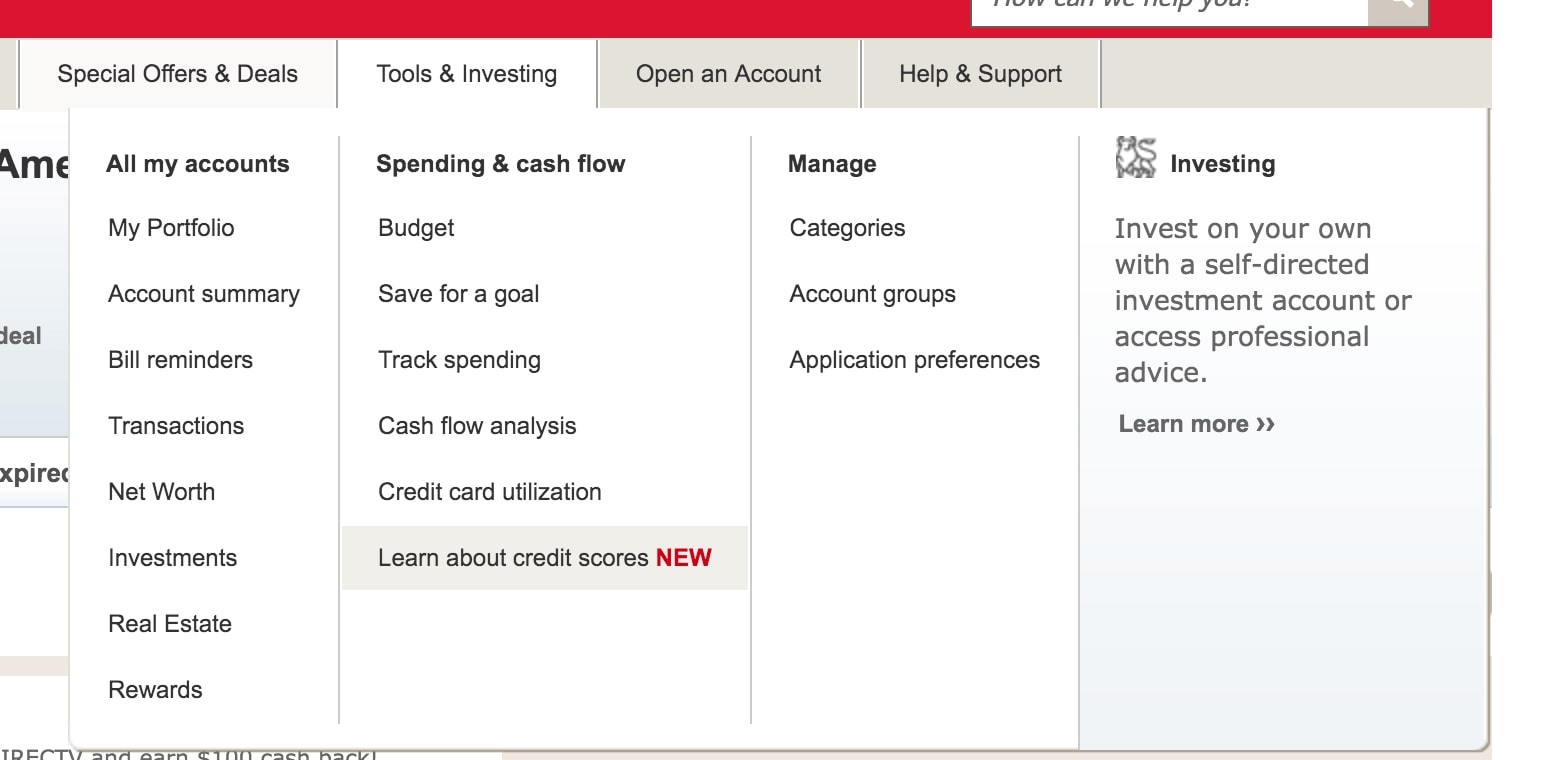

Finance
When To Apply For A Student Loan
Published: November 3, 2023
Learn when to apply for a student loan and take control of your finances. Prepare for your future education with smart financial planning.
(Many of the links in this article redirect to a specific reviewed product. Your purchase of these products through affiliate links helps to generate commission for LiveWell, at no extra cost. Learn more)
Table of Contents
Introduction
Student loans have become an indispensable part of financing higher education for many students. While pursuing a college degree opens doors to numerous opportunities, it often comes at a significant cost. This is where student loans come into play, providing financial assistance to cover tuition fees, living expenses, and other educational costs.
Understanding the ins and outs of student loans is crucial to ensure that you make informed decisions about your financial future. Whether you’re a prospective student or already enrolled in a program, knowing when to apply for a student loan is essential.
In this article, we’ll explore the different aspects of student loans and provide guidance on the best time to apply. We’ll discuss the factors you should consider before applying, the types of student loans available, and offer tips for a successful loan application.
By the end of this article, you’ll have a clearer understanding of the process, enabling you to make sound financial decisions regarding your education.
Understanding Student Loans
Before diving into the timing of applying for a student loan, it’s important to grasp the fundamentals of what student loans are and how they work.
Student loans are loans specifically designed to help students cover the costs associated with pursuing higher education. These loans typically include tuition fees, textbooks, housing, and other educational expenses. Unlike grants or scholarships, student loans must be repaid with interest.
There are two primary types of student loans: federal loans and private loans. Federal loans are funded by the government and offer certain benefits, such as lower interest rates and flexible repayment options. Private loans, on the other hand, are offered by financial institutions and have varying interest rates and terms.
It’s important to carefully consider the terms, interest rates, and repayment options of both federal and private loans before making a decision. Maintaining a clear understanding of the loan details will enable you to make an informed choice regarding which loan best suits your financial situation.
It’s worth noting that student loans can have a significant impact on your financial future. It’s crucial to borrow only what you need and develop a realistic plan for repayment once you graduate.
Now that we have a basic understanding of student loans, let’s explore the factors you should consider before applying.
Factors to Consider Before Applying
Before applying for a student loan, there are several factors you should carefully evaluate to ensure that you make the best decision for your financial well-being. These factors include:
1. Financial Need: Assess your financial situation and determine how much funding you require to cover your educational expenses. Consider factors such as tuition fees, textbooks, accommodation, and living costs. By understanding your financial needs, you can apply for a loan that accurately matches your requirements.
2. Interest Rates: Compare the interest rates offered by different lenders. Federal student loans usually have lower interest rates compared to private loans. Understanding the interest rates will help you estimate the total amount you’ll be repaying over the loan’s lifespan.
3. Repayment Options: Evaluate the repayment options available to you. Federal loans often provide flexible repayment plans, such as income-driven repayment or loan forgiveness programs. However, private loans may have stricter repayment terms. Consider your financial circumstances and choose a loan with repayment options that align with your future plans.
4. Loan Terms: Review the terms and conditions of the loan, including the length of the repayment period. Longer repayment periods may result in lower monthly payments but higher overall interest costs. Understand the trade-offs and choose a loan term that suits your financial capacity.
5. Credit History: Your credit history will play a significant role in your loan application process, especially for private loans. Lenders will assess your creditworthiness and use it to determine the interest rate and loan approval. Take steps to build a good credit history or consider applying with a cosigner if your credit is limited.
6. Eligibility: Understand the eligibility criteria for different loans. Some loans may have specific requirements, such as enrollment status, academic progress, or residency. Knowing if you meet the eligibility criteria will help you focus your efforts on the right loan options.
Considering these factors before applying for a student loan will allow you to make an informed decision and choose a loan that aligns with your financial goals and circumstances.
When is the Right Time to Apply?
Timing is crucial when it comes to applying for a student loan. Applying too early or too late can have an impact on your financial situation. Here are some guidelines to help you determine the right time to apply:
1. Apply for Federal Loans Early: Federal student loans have specific application deadlines, and funds are typically awarded on a first-come, first-served basis. To increase your chances of receiving the maximum amount of aid, submit your Free Application for Federal Student Aid (FAFSA) as soon as possible after it becomes available on October 1st. Early application ensures you are considered for all available federal grants, scholarships, and work-study opportunities.
2. Consider School Deadlines: In addition to federal deadlines, schools may have their own financial aid application deadlines. Research and note the deadlines for your prospective schools to ensure you don’t miss out on any institutional aid opportunities.
3. Evaluate Financial Circumstances: Assess your financial situation and determine when you will need the funds. If you won’t require immediate funding, it may be advantageous to wait until closer to the start of the academic year to apply. This can help you avoid accruing unnecessary interest on your loan.
4. Plan for Loan Processing Time: Keep in mind that the processing time for student loans can vary. Federal loans typically have a faster processing time compared to private loans, which may require additional documentation and verification. Leave enough time for the loan to be processed and disbursed before your educational expenses are due.
5. Anticipate Tuition Payment Deadlines: Familiarize yourself with your chosen school’s tuition payment deadlines. Knowing when tuition needs to be paid will guide you in applying for a loan with enough time to receive the funds and meet your financial obligations.
Ultimately, applying for a student loan at the right time ensures timely access to funds, maximizes your eligibility for aid, and reduces unnecessary stress associated with financial planning. Be proactive and stay informed about deadlines to make the application process as smooth as possible.
Applying for Federal Student Loans
When it comes to financing your education, federal student loans are often a favorable option due to their lower interest rates and borrower-friendly terms. Here’s a step-by-step guide on how to apply for federal student loans:
1. Complete the FAFSA: The first step in applying for federal student loans is to complete the Free Application for Federal Student Aid (FAFSA). The FAFSA collects information about your financial situation and determines your eligibility for federal grants, scholarships, work-study programs, and loans. Fill out the FAFSA online at fafsa.gov, ensuring you have accurate and up-to-date information on hand.
2. Gather Required Documents: Before starting your FAFSA, gather all the necessary documents, including your Social Security number, federal tax returns, W-2 forms, bank statements, and records of any other income or assets. Having these documents ready will simplify the application process and ensure the accuracy of your information.
3. Follow Application Instructions: The FAFSA will guide you through the application process, including providing detailed instructions on each section. Be thorough and double-check your responses to avoid any errors or omissions. Mistakes on the FAFSA can delay the processing of your application.
4. Review Your Student Aid Report (SAR): After submitting your FAFSA, you will receive a Student Aid Report (SAR), which outlines the information you provided and your Expected Family Contribution (EFC). Review your SAR carefully to ensure there are no errors. If corrections are needed, make the necessary changes and submit them for review.
5. Receive Financial Aid Offers: Once your FAFSA is processed, you will receive financial aid offers from the schools you listed on your application. These offers will detail the types and amounts of aid you are eligible to receive, including federal student loans. Carefully review each offer, considering the loan terms and repayment options.
6. Accept or Decline Loan Offers: After evaluating your financial aid offers, decide which loans you want to accept or decline. If you decide to accept federal student loans, indicate your acceptance through the school’s financial aid office. Express your acceptance promptly to secure the loans and ensure the timely disbursement of the funds.
7. Complete Entrance Counseling and Sign the Master Promissory Note (MPN): Before receiving the loan funds, you may need to complete entrance counseling, which provides information on your rights and responsibilities as a borrower. Additionally, you will need to sign the Master Promissory Note (MPN), which is a legally binding agreement to repay the loan.
By following these steps, you will navigate the federal student loan application process smoothly, securing the financial assistance you need for your education.
Applying for Private Student Loans
In addition to federal student loans, private student loans are available from various financial institutions, including banks, credit unions, and online lenders. These loans can help bridge the gap between the cost of education and other forms of financial aid. Here’s a step-by-step guide on how to apply for private student loans:
1. Research Lenders: Start by researching different lenders that offer private student loans. Compare interest rates, repayment terms, and other features that suit your needs. Look for reputable lenders with favorable terms and a track record of good customer service.
2. Determine Loan Amount and Terms: Assess your financial needs and determine the loan amount you require. Consider a repayment schedule that aligns with your future plans and financial capacity. Be mindful of borrowing more than necessary, as private loans may have higher interest rates compared to federal loans.
3. Check Eligibility Requirements: Review the eligibility criteria set by the lenders. This may include factors such as credit history, employment status, income, and enrollment in an eligible educational institution. Understand the requirements to ensure that you qualify for the loan.
4. Gather Required Documents: Collect the necessary documents for the loan application process. This typically includes identification documents, proof of income, and relevant financial information. Each lender may have specific document requirements, so be sure to check their website or contact them directly for a comprehensive list.
5. Submit Loan Application: Complete the application form provided by the lender. Fill out all the necessary fields accurately and truthfully. Be prepared to provide personal information, financial details, and information about your educational institution. Double-check your application to ensure accuracy and completeness.
6. Consider a Cosigner: Private student loans often require a cosigner, especially if you have limited credit history or income. A cosigner is someone who agrees to take responsibility for the loan if you fail to make payments. Consider asking a trusted family member or friend to be your cosigner, as it may improve your chances of loan approval and potentially secure a lower interest rate.
7. Review Loan Terms and Conditions: Carefully review the loan offer, including the interest rate, repayment term, and any associated fees. Understand the grace period, the total cost of the loan over its lifetime, and the availability of deferment or forbearance options. Make sure you are comfortable with the terms before accepting the loan.
8. Accept and Sign Loan Agreement: If you decide to proceed with the loan, accept the loan offer from the lender. Read and sign the loan agreement, also known as the promissory note, which outlines the terms and conditions of the loan. Be aware of your responsibilities as a borrower and the consequences of defaulting on the loan.
By following these steps, you can apply for private student loans with confidence and access the additional funding you need to pursue your education.
Tips for a Successful Loan Application
When applying for student loans, whether federal or private, there are several tips you can follow to increase your chances of a successful application:
1. Understand and Research: Educate yourself about the different types of loans available, their terms, and their eligibility criteria. Take the time to research and compare lenders to find the best fit for your needs.
2. Start Early: Begin the application process well in advance to avoid last-minute delays or missing deadlines. This allows ample time to gather required documents, complete the necessary forms, and make any necessary corrections or adjustments.
3. Review Your Credit Report: Check your credit report for accuracy and address any errors or discrepancies before applying for a loan. Lenders often consider your credit history when assessing your loan application, so a good credit score can increase your chances of approval and better interest rates.
4. Strengthen Your Creditworthiness: If you have a limited credit history or a low credit score, take steps to improve your creditworthiness. This can include paying bills on time, reducing outstanding debt, and avoiding unnecessary credit inquiries.
5. Prepare Required Documents: Gather all the necessary documents, such as tax returns, bank statements, and proof of income, well in advance. Ensure that these documents are up to date and readily available when you submit your loan application.
6. Be Honest and Accurate: Provide accurate information on your loan application. False or misleading information can lead to difficulty in securing the loan or even potential legal consequences.
7. Consider a Cosigner: If you have a limited credit history or income, having a creditworthy cosigner can strengthen your loan application. A cosigner with a good credit history can increase your chances of loan approval and may even help secure a lower interest rate.
8. Read and Understand Loan Terms: Carefully review the terms and conditions of the loan before accepting it. Pay attention to interest rates, repayment options, grace periods, and any fees associated with the loan. Understand your responsibilities as a borrower and the consequences of not repaying the loan.
9. Seek Financial Aid Help: If you have any questions or need guidance throughout the loan application process, consider reaching out to your school’s financial aid office or a financial aid counselor. They can provide valuable advice, answer your queries, and help you navigate through the application process.
10. Maintain Open Communication: Stay in touch with the lender throughout the loan application process. Address any inquiries promptly, provide requested information in a timely manner, and follow up regularly to ensure a smooth and efficient application process.
By following these tips, you can enhance your chances of a successful student loan application and secure the financing you need for your education.
Conclusion
Applying for a student loan is a significant financial decision that can have a lasting impact on your educational journey and financial future. Understanding the process and being well-prepared can help you navigate through the complexities of loan applications and ensure a successful outcome.
In this article, we explored the various aspects of applying for student loans. We discussed the importance of understanding student loans, factors to consider before applying, and the right time to submit your application. We also provided guidance on applying for both federal and private student loans, along with tips for a successful loan application.
When it comes to student loans, it’s crucial to make informed decisions. Take the time to research and compare different loan options, understand the terms and conditions, and assess your financial needs. Consider federal loans as they often offer favorable interest rates and flexible repayment options. However, if additional funding is required, private student loans can bridge the gap.
Remember to be proactive and start your application process early, gather the necessary documents, and maintain open communication with your lender. Be aware of your responsibilities as a borrower and make sure to review and understand the loan terms before accepting any offer.
Applying for a student loan may seem overwhelming, but with careful planning and consideration, you can successfully secure the financial assistance you need to pursue your educational goals. Remember to use these tips as a guide and seek assistance from financial aid professionals when needed.
By approaching the student loan application process with knowledge and preparedness, you can embark on your educational journey with confidence, knowing that you have taken the necessary steps to fund your future success.














